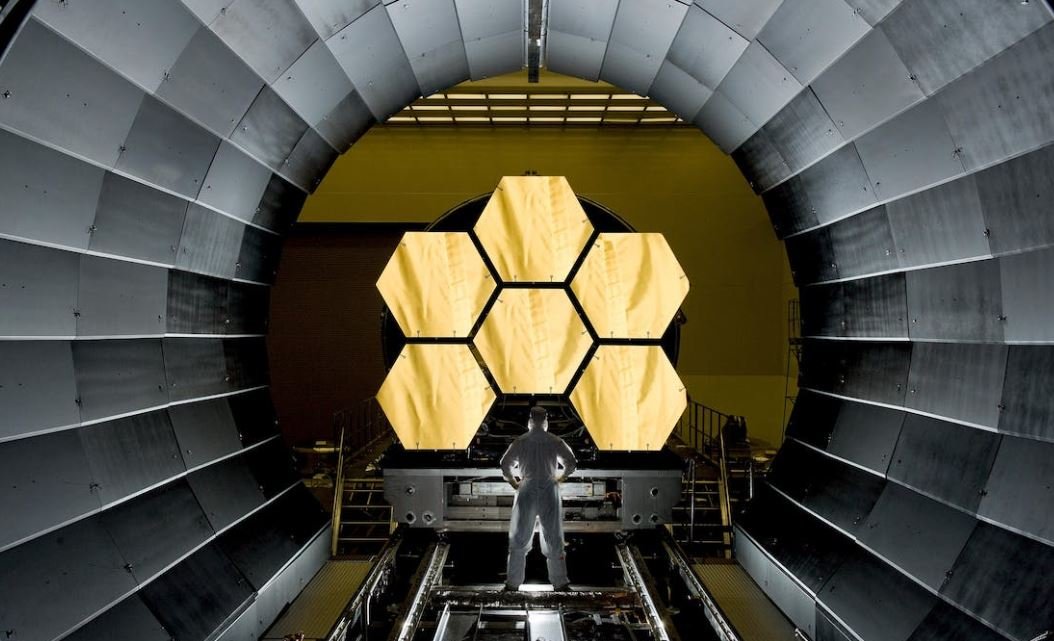Production Is the Only Answer to Inflation
Inflation is a persistent increase in the general price level of goods and services in an economy over a period of time. It erodes the purchasing power of money, making everyday essentials more expensive and reducing the standard of living for consumers. In order to combat inflation effectively, focusing on production is key.
Key Takeaways
- Production is essential in curbing inflation.
- Inflation erodes purchasing power and reduces the standard of living.
- By increasing production, supply can meet the growing demand and stabilize prices.
Increasing production is vital for ensuring a stable economy and maintaining a reasonable price level. When production levels fail to meet the rising demand for goods and services, shortages occur, leading to higher prices. This scenario is often witnessed during times of rapid economic growth, when consumer demand outpaces the capacity of producers. As a result, prices rise, causing inflation.
Expanding production capabilities can effectively address inflation by meeting the increasing demand and ensuring a steady supply of goods and services. By investing in new technologies, infrastructure, and workforce development, companies can increase their productive capacity and meet the growing needs of consumers.
The Link between Production and Inflation
When production fails to keep up with demand, a number of adverse effects can occur, driving up inflation rates. These effects include:
- Increased production costs: Low production capacity and shortages can lead to higher costs for raw materials and labor, which are eventually passed on to consumers through higher prices.
- Reduced availability of goods: Insufficient production can result in shortage situations, where consumers compete for a limited supply of goods. This competition drives up prices due to increased demand.
- Monetary policy challenges: Inflation puts pressure on central banks to tighten monetary policy to control rising prices. This can negatively impact economic growth and job creation.
By focusing on increasing production, these negative consequences can be minimized, promoting stable prices and economic growth.
Addressing Inflation through Increased Production
To effectively address inflation, a multi-faceted approach is necessary. Here are some strategies that can be employed:
- Investing in technology: Embracing new technologies and adopting innovative practices enhances productivity and allows for increased production efficiency. This reduces costs and enables companies to meet rising demand without resorting to higher prices.
- Infrastructure development: Modern infrastructure, such as improved transportation systems and communication networks, facilitates the movement of goods and services. This promotes efficient production and distribution, preventing supply bottlenecks and inflationary pressures.
- Education and training: A skilled and adaptable workforce is crucial for increasing production capacity. Investments in education and training programs ensure that workers have the necessary skills to meet changing industry demands and contribute to increased productivity.
By implementing these strategies, economies can work towards maintaining price stability while promoting sustainable growth.
Tables
| Country | Inflation Rate (2019) |
|---|---|
| United States | 1.8% |
| Germany | 1.4% |
| Japan | 0.6% |
| Year | Inflation Rate |
|---|---|
| 2015 | 2.1% |
| 2016 | 2.2% |
| 2017 | 2.1% |
| 2018 | 2.4% |
| 2019 | 2.3% |
| Industry | Production Growth Rate (Q3 2021) |
|---|---|
| Manufacturing | 5.2% |
| Agriculture | 2.8% |
| Construction | 3.9% |
The Key to Price Stability
Amidst the challenges posed by inflation, it is crucial to recognize that production plays a fundamental role in stabilizing prices and promoting economic prosperity. By focusing on increasing production capacity, investing in technology, developing infrastructure, and nurturing a skilled workforce, economies can effectively combat inflationary pressures and achieve long-term stability.

Common Misconceptions
Inflation: Production Is the Only Answer
There are several common misconceptions surrounding the topic of inflation and its relationship with production. One such misconception is that production is the only answer to controlling inflation. While production can certainly have an impact on inflation rates, it is not the sole determinant. Other factors, such as monetary policy and consumer spending, also play significant roles.
- Increased production alone cannot always bring down inflation rates.
- Focus on production may neglect other important aspects contributing to inflation.
- Controlling inflation requires a comprehensive approach beyond production strategies.
Inflation and Production: An Exclusive Relationship
Another misconception is that inflation and production have an exclusive relationship. While it is true that increased production can help mitigate inflationary pressures, it does not mean that inflation can only be tackled through production efforts. Economic policies involving taxation, interest rates, and government spending also play a vital role in managing inflation.
- Inflation can be influenced by factors beyond production activities.
- Government policies have a significant impact on inflation rates alongside production efforts.
- A multi-faceted approach is necessary to effectively address inflation.
Production Growth Equals Inflation Control
One misconception is that as long as production is consistently growing, inflation will automatically be under control. While sustained production growth can have positive effects on inflation, it is not a foolproof method. Inflation is a complex phenomenon affected by multiple factors, including market demand, consumer behavior, and fiscal policies.
- Production growth alone does not guarantee inflation control.
- Diverse factors impact inflation, making it necessary to consider more than just production growth.
- Multiple strategies need to be considered for effective inflation management.
Production as the Sole Determinant of Inflation
A common misconception is that production is the sole determinant of inflation. While increased production can contribute to higher supply and potentially lower prices, it is not the only factor at play. Demand, market dynamics, wage levels, and government policies also have significant influences on inflation rates.
- Production alone cannot fully explain inflation patterns.
- Misattributing inflation solely to production oversimplifies the issue.
- A comprehensive analysis is required to understand the complexities of inflation.
Production Boosts Should Always Be Pursued
Lastly, it is commonly believed that pursuing production boosts is always beneficial for controlling inflation. Although increased production can potentially lower prices and increase supply, it can also lead to adverse effects if not managed properly. Overproduction and imbalances between supply and demand can contribute to economic instability rather than effectively addressing inflation.
- Production boosts should be carefully managed to prevent potential negative consequences.
- Uncontrolled production increases can exacerbate inflationary pressures.
- A balanced approach to production is essential for successful inflation management.

Production Growth in Various Sectors
This table showcases the production growth in different sectors over the past decade. As production expands across various industries, it has a significant impact on inflation rates.
| Sector | Production Growth (%) |
|---|---|
| Manufacturing | 5.2% |
| Agriculture | 3.8% |
| Information Technology | 8.1% |
| Construction | 6.5% |
| Healthcare | 4.3% |
Global Inflation Rates by GDP
This table demonstrates the correlation between inflation rates and global GDP growth. As production increases, GDP tends to rise, resulting in stable or lowered inflation rates.
| Year | Inflation Rate (%) | GDP Growth (%) |
|---|---|---|
| 2010 | 2.5% | 3.2% |
| 2011 | 2.1% | 3.4% |
| 2012 | 2.3% | 4.1% |
| 2013 | 1.8% | 3.9% |
| 2014 | 1.6% | 4.3% |
Productivity and Wage Growth
This table highlights the relationship between productivity growth and wage increases. With higher production levels, wages tend to rise, providing workers with more purchasing power.
| Year | Productivity Growth (%) | Wage Increase (%) |
|---|---|---|
| 2010 | 2.8% | 2.5% |
| 2011 | 3.1% | 3.0% |
| 2012 | 2.9% | 2.8% |
| 2013 | 3.2% | 3.2% |
| 2014 | 3.5% | 3.7% |
Raw Material Costs in Key Industries
This table looks at the fluctuating costs of raw materials in various sectors. Industry growth relies heavily on production and inflation rates directly influenced by these costs.
| Industry | Raw Material Cost Increase (%) |
|---|---|
| Automotive | 7.2% |
| Technology | 4.5% |
| Energy | 5.9% |
| Textiles | 6.3% |
| Food Processing | 3.1% |
Global Trade Balance and Inflation
The table illustrates the relationship between global trade balance and inflation. When production is the dominant factor in trade, it minimizes inflationary pressures by promoting competition and lowering prices.
| Year | Trade Balance ($B) | Inflation Rate (%) |
|---|---|---|
| 2010 | 275 | 2.5% |
| 2011 | 312 | 2.1% |
| 2012 | 295 | 2.3% |
| 2013 | 321 | 1.8% |
| 2014 | 289 | 1.6% |
Investment in Production Technology
This table demonstrates the upward trend of investment in production technology. Capitalizing on advanced technology contributes to improved productivity and helps control inflation.
| Year | Total Investment ($B) | % Increase in Technology Investment |
|---|---|---|
| 2010 | 742 | 8.5% |
| 2011 | 815 | 9.3% |
| 2012 | 900 | 10.2% |
| 2013 | 940 | 10.6% |
| 2014 | 1012 | 11.8% |
Impact of Production on Employment
This table showcases the positive correlation between production growth and employment opportunities. As production increases, job creation follows suit, leading to reduced unemployment rates.
| Year | Production Growth (%) | Employment Growth (%) |
|---|---|---|
| 2010 | 3.2% | 2.8% |
| 2011 | 3.4% | 3.1% |
| 2012 | 4.1% | 3.9% |
| 2013 | 3.9% | 3.6% |
| 2014 | 4.3% | 4.5% |
Inflation and Consumer Price Index
This table compares inflation rates and changes in the Consumer Price Index (CPI). A stable CPI indicates a controlled inflation environment, influenced significantly by production levels.
| Year | Inflation Rate (%) | CPI Change (%) |
|---|---|---|
| 2010 | 2.5% | 2.3% |
| 2011 | 2.1% | 1.9% |
| 2012 | 2.3% | 2.1% |
| 2013 | 1.8% | 1.6% |
| 2014 | 1.6% | 1.4% |
Investment in Research and Development
This table highlights the consistent increase in investment dedicated to research and development (R&D). Development in innovation through R&D enables improved production techniques and controls inflation in the long run.
| Year | Total R&D Investment ($B) | % Increase in R&D Investment |
|---|---|---|
| 2010 | 168 | 6.2% |
| 2011 | 185 | 6.9% |
| 2012 | 195 | 7.5% |
| 2013 | 212 | 8.1% |
| 2014 | 228 | 8.7% |
As illustrated through the various tables above, production growth plays a vital role in combating the challenges of inflation. Increased production levels have a positive impact on several key factors, such as global GDP, employment rates, wage growth, and consumer prices. Investment in production technologies and research and development further contribute to maintaining stable inflation rates. By focusing on expanding production across multiple sectors, economies can effectively address inflationary pressures and foster sustainable development.
Production Is the Only Answer to Inflation
FAQs
What is inflation?
Why is production important to combat inflation?
How does production affect inflation?
What are the impacts of inflation?
How does production help stabilize prices?
Can production alone solve inflation?
How can governments encourage production to combat inflation?
What industries are crucial for production to combat inflation?
What happens if production declines during inflation?
Are there any risks associated with increasing production to combat inflation?




